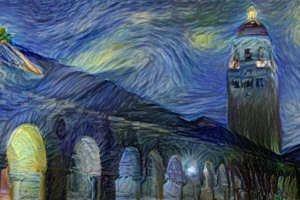I’m excited that my article, “Suffering and Covenantal Hope in Galatians: A Critique of the ‘Apocalyptic Reading’ and Its Proponents,” is finally in print, appearing in the newest issue of the Scottish Journal of Theology (68.1 [2015]: 1–15). The paper was originally presented in the Paul Group at the 32nd Annual Meeting of the British New Testament Conference which took place at King’s College, London in September 2012. Below is the abstract:
This article addresses the so-called ‘apocalyptic reading of Paul,’ taking the representative work of J. Louis Martyn and Martinus C. de Boer as its primary focus. The chief contention is that the ‘apocalyptic reading’ does not resemble the historical phenomenon of Jewish apocalyptic literature, although the scope has been intentionally limited to Galatians. The present study is composed of two halves. The first half offers a critique of what it means for Paul to be an apocalyptic thinker according to Martyn and de Boer. Their emphasis is on discontinuity, duality, and dichotomy, which coheres neither with first-century apocalyptic literature and its antecedents, nor with the letter to the Galatians. Their nuanced notion of apocalyptic has led to an unnecessary bifurcation between apocalyptic and covenant (not to mention Heilsgeschichte) in the interpretation of Paul. However, this article suggests that the dichotomy has been misplaced, both in relation to the discontinuity that Paul does articulate (i.e. with the law), and the dichotomy reflected in apocalyptic literature, namely, the division between the present evil age and the glorious age to come. Thus, it is argued that Martyn and de Boer’s focus on discontinuity hardly constitutes apocalyptic in a first-century historical sense. Rather, their specific emphasis owes its articulation to the theology of Karl Barth. After arguing that the ‘apocalyptic reading’ lacks historical precision (and possibly theological forthrightness), the second half of the study argues that some neglected features of Galatians, such as suffering and persecution, cohere with the apocalyptic character of the letter, and are common features of apocalyptic broadly. In fact, the division between apocalyptic and covenant in scholarship on Galatians is bridged by the themes of conflict and crisis. This is because apocalyptic hope often arises in the absence of the realization of covenantal promises and expectations; a covenantal disconnect is created and aggravated by crises and hardships of various sorts, and hence the need for apocalyptic hope. Suffering therefore ties together the strands of apocalyptic and covenant in Galatians. If Martyn and de Boer’s ‘apocalyptic reading’ was truly apocalyptic in a first-century historical sense, it would have integrated the imagery of suffering and persecution found in the letter.
If you would like a pdf copy of the article please feel free to email me at jad22@st-andrews.ac.uk





Leave a Reply
Your email is safe with us.